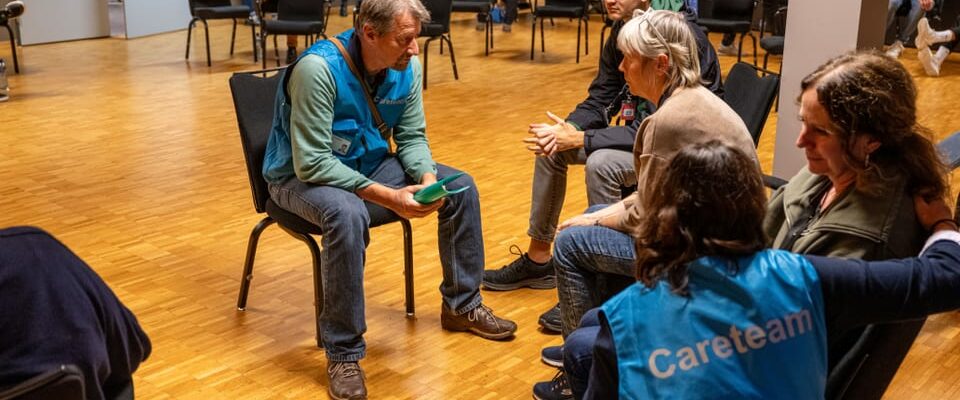Contents
After disasters, the help of care teams can be crucial. A foundation specializes in companies.
They come when things calm down after a catastrophe. That’s what they say at Carelink. Then when rescue workers and police have left. Your area is the psychological wounds.
It happens on average every day, somewhere in a company in Switzerland. “We are often called to suicide cases,” says Carelink managing director Walter Kälin. They are also involved in robberies of banks, small shops and gas stations.
350 emergency psychologists and “caregivers”
A company can trigger a Carelink alarm via Rega. There will then be 15 minutes for a call back at the Carelink headquarters in Glattbrugg, Zurich. What happened? How many are affected?
Once the responsible operations management has clarified these questions, it can rely on a network of around 350 emergency psychologists and so-called “caregivers”.
Last year, the foundation carried out around 380 such missions. Carelink has contracts with companies of all sectors and sizes. This includes SBB, Swisscom, UBS and SRF.
Zurich Airport has hired Carelink in the event of a so-called “major event”, such as a shooting spree.
Legend:
During the biennial large-scale exercise at Zurich Airport, emergency services recreated scenarios in November 2023.
Zurich Cantonal Police
Depending on their size, companies pay membership fees of between 5,000 and 50,000 francs per year. They can contact Carelink 24 hours a day and receive advice and training. There are also costs if it is used.
Carelink also supports mass layoffs. In such cases, the team works with companies to prepare how they will deliver this message to the workforce and they are available for discussions.
They need security and they need support.
After an extreme experience, the brain functions differently. A potentially traumatic event could represent a break with time, explains emergency psychologist Petra Strickner as she trains Swisscom management staff. The perception of time is changing. Those affected later divided their lives into a time “before” and a time “after”.
Immediately afterwards, according to managing director Walter Kälin, people needed two things: “They need security and they need support.” The stress reactions are very different. For some they come with a delay. Carelink also explains this to those affected.
No helper syndrome desired
Recruiting new emergency services is not difficult. As a rule, it is people from related professions who receive further training at Carelink. In role-playing games, they put themselves in different situations.
One thing may come as a surprise: Carelink does not look for people with helper syndrome. Emergency psychologist Janine Köhli, who leads the training day, says: “We are there to enable people to cope with the exceptional situation themselves.” Small decisions should be left to those affected. For example, you could choose a drink and prepare it yourself. Small activities like these can alleviate the feeling of powerlessness.
The foundation is expressly responsible for acute use. Anyone who needs long-term therapeutic help will no longer be cared for by Carelink. However, that is the exception. Four out of five people usually recover from a so-called “extraordinary event” within a few weeks.
